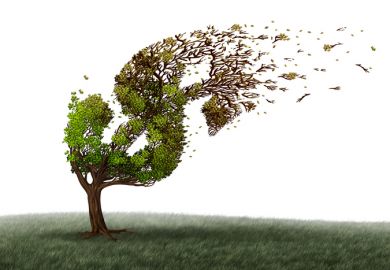These four volumes cover a wide range of recent discussion on China's turbulent past, rapidly changing present and uncertain future. Here are studies of citizens' private and public lives in Chinese cities transformed during the 1980s under the post-Mao reforms; a premature obituary, disguised as an "assessment" of his long revolutionary career, of Deng Xiaoping; a further addition to the already copious literature on Greater China's prospects of superpower status; and a survey of the major issues in Sino-US relations from 1949 up to the present.
Urban Spaces in Contemporary China evolved out of a 1992 conference on city life in post-Mao China. Such conference-derived, edited volumes have their particular characteristics: the value of access to the fruits of recent scholarship and the interaction of active researchers is often reduced by the uneven quality of the papers collected, and these, in addition, may include contributions of limited relevance to the book's avowed central themes. This volume stands out in the genre both for its quality and for the consistency of its focus and argument. Essential reading for anyone with an interest in the civil society debate in the Chinese context, papers by specialists in a variety of disciplines explore the new possibilities for personal autonomy and non-state associational activities which have been emerging in recent years.
One justification for this book, as is noted by Deborah Davis in her introduction, is, simply, that almost 20 years after the death of Mao, there is a definite need for some sort of stocktaking of the momentous changes since the end of the 1970s. Many of us are guilty of this constant striving to keep up with the rush of events at the expense of more considered reflection of what it all might mean in the longer term, and there is, therefore, the risk of serious misunderstanding of future developments unless some sort of overview of the social upheavals experienced by China in the past two decades is attempted.
But the main strength of the book is its specific contribution to the civil society debate. A heartening number of the contributors exhibit a combination of erudition, good sense and a depth of experience of China which enables them to go beyond the sometimes trite questions of whether and when we will see the emergence of recognisable civil society in China. It is a debate which too often shows little awareness of the problematic assumptions being made about the historical background of this concept and, therefore, its relevance to Chinese developments. But in the case of this volume, nuanced and perceptive analyses bring out the interrelatedness of private, public and state spheres in the Chinese context and the many inconsistencies of the much-touted "retreat of the state". While many urban citizens are indeed challenging the existing public-private and state- society boundaries through individual and associational activities, it is, as Elizabeth Perry points out, a more complex, even a messier picture than that implied by a simple state-society dichotomy.
Perry's chapter on Chinese labour offers a preview of her second volume on the role of Chinese labour in modern China's state formation, and this and Jeffrey Wasserstrom's and Liu Xinyong's papers will be of interest to students of the 1989 protests in particular. Primarily aimed at a specialist audience, the book would nevertheless also be of considerable value to final-year undergraduates. It offers readable and accessible explorations of topics ranging from the fate of politically engaged poetry and avant-garde art in post-Mao China, to changes in the economy, built environment and governance of Chinese cities, and has the benefit of a real sense of immediacy and awareness of contemporary events. This is an important factor in such a book, given that even the mid-1980s are beginning to seem like a past time where they did things very differently.
Reasonably comprehensive in its coverage of developments in the physical, economic, cultural, social and political environment of Chinese urbanites, one significant omission from this volume is, however, apparent. Fascinating though Nancy Chen's examination of the qigong phenomenon is, an examination of the related topic of China's recent religious revivals, encompassing folk Daoism, Buddhism and Christianity, would have rounded out the book's final section; as it is there are only brief mentions of this phenomenon in the general introduction and the introduction to this section.
David Shambaugh's latest contribution to the growing Deng biography/ obituary corpus, Deng Xiaoping: Portrait of a Chinese Statesman, claims to be both comprehensive and authoritative, and, given the reputations of the contributors, this is not an idle claim. The division of the book into sections on Deng as politician, economist, social reformer, soldier and statesman, prefaced with a brief political profile and early biography, makes it of far more use to the student than any existing biographical study. And it seems well qualified for its chosen role as the work of first resort for those interested in Deng and his contribution to the post-Mao transformation of China in particular.
All of the book's chapters offer concise assessments of one particular aspect of Deng's career, but some of them do much more than this, addressing important questions connected with the nature of Chinese socialism and China's political culture. An example is Martin King Whyte's chapter on Deng the social reformer, which takes as its main theme a comparison of Deng's approach to the selection and promotion of human talent, and its consequences for the sociopolitical order, with that of Mao. However, the juxtaposition of this volume and that produced by Davis et al throws up some concerns about the way in which the former sometimes seems to be glossing over important elements of current debates. The conclusion to Shambaugh's own contribution, on Deng the politician, makes the observation that Deng "failed to grasp the most fundamental of all Marxist precepts - the influence of the economic base on the superstructure". Though not original in indicating the great man's apparent ignorance of or disdain for certain fundamentals of the ideology his party still professes to uphold (Maurice Meisner in his and Arif Dirlik's Marxism and the Chinese Experience precede him), this is certainly a pertinent comment. But his earlier remarks, on the "inevitability" or "inexorability" of progress from the consequences of economic reform to inevitable erosion of party-state hegemony and thence democracy, lack any sense of the complexities of these relationships which Urban Spaces does so much to illuminate. This is explicable in terms of the difference in the two books' main audiences, but clearly the brevity of Deng Xiaoping: Portrait of a Chinese Statesman, though a boon to harried students, has its drawbacks too.
It is no bad thing that Greater China: The Next Superpower? concerns itself rather more with the first part of its title than with the second, given the proliferation of speculations on the question of China's putative superpower status. One would expect such a volume to cover questions raised by the increasing economic integration of "Greater China's" component parts, the People's Republic, Taiwan and Hong Kong, as well as issues around possible formal political reunification of the PRC and Taiwan, and this the book does for the most part with intelligence and clarity, as in its usefully concise account of PRC-Taiwan interaction since the 1989 upheavals.
But there are additional bonuses, such as Thomas Gold's contribution on another aspect of Greater China's growing integration, that provided by the penetration of all aspects of popular culture from Taiwan and Hong Kong into the mainland. Gold neatly summarises the tension between the shorter-term stabilising effects of mainland youth's reception of Gangtai popular culture, and the longer-term implications of this culture's contribution to a "peaceful evolution" which may eventually corrode party-state domination of both economy and superstructure to the point where it becomes unviable.
Rosemary Foot's The Practice of Power is weighted towards the student of American foreign relations and policy-making rather than the China specialist. But it still contains much that is valuable to those whose interests are primarily on the other side of the Pacific. While not dismissing the importance of the triangular relationship between the PRC and the two superpowers (the Sino-Soviet split merits a chapter, although here, as elsewhere, the main focus is on American perceptions of Chinese power in this context), Foot devotes most of her attention to the way in which global and domestic relationships inform an understanding of Sino-US relations, thus both broadening out and making more specific the discussion. The avoidance of the common "tripolar world" line in analysing the relationship between the two countries enables the author to include much detailed comment on less well-trodden aspects of this subject, particularly with reference to periods like the early 1950s in China. The chapter on American public opinion and Chinese policy is also something which is not readily found in existing accounts of China's post-1949 foreign relations.
Jackie Sheehan is lecturer in international history, Keele University.
Deng Xiaoping: Portrait of a Chinese Statesman
Editor - David Shambaugh
ISBN - 0 19 828933 2
Publisher - Clarendon Press, Oxford
Price - £10.00
Pages - 172
Register to continue
Why register?
- Registration is free and only takes a moment
- Once registered, you can read 3 articles a month
- Sign up for our newsletter
Subscribe
Or subscribe for unlimited access to:
- Unlimited access to news, views, insights & reviews
- Digital editions
- Digital access to THE’s university and college rankings analysis
Already registered or a current subscriber?



